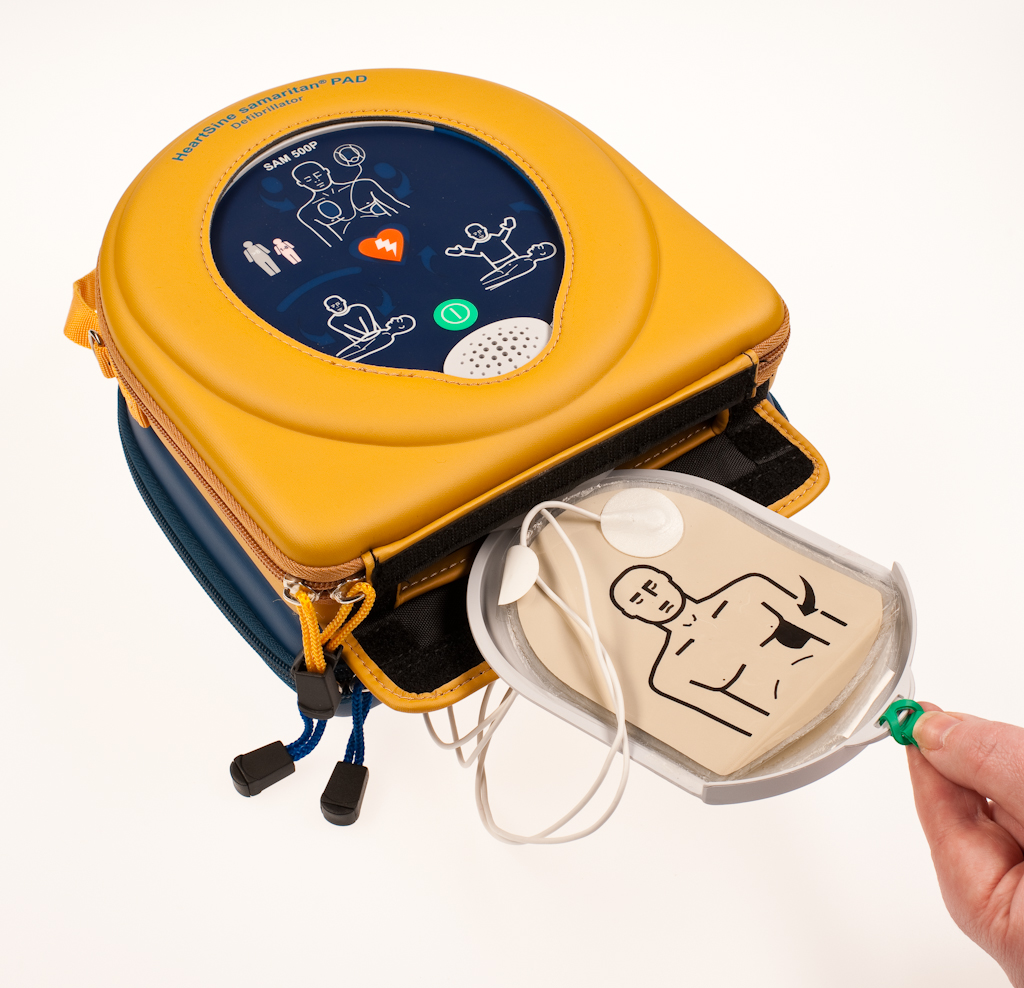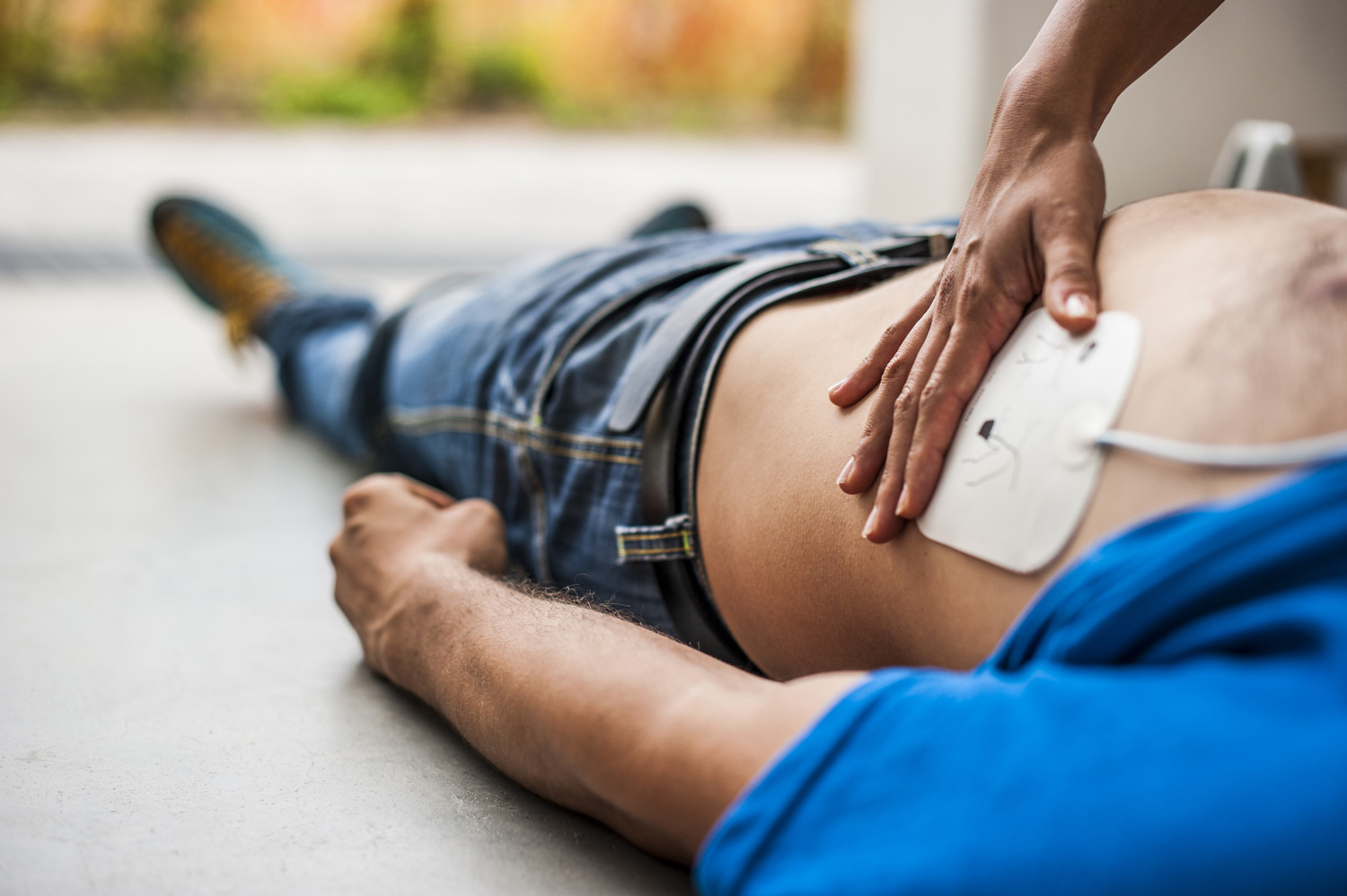
How Does a Defibrillator Actually Work?

Thanks to a number of popular medical dramas, most of us can recognise a defibrillator and know that it uses an electric shock to save lives – but why does this work? What does the defibrillator do exactly? And what is the difference between the defibrillators we see in hospitals and an AED (automated external defibrillator)?
What Does a Defibrillator Do?
A defibrillator can monitor and regulate heartbeats to re-establish a healthy, regular rhythm. It can do this because of how the heart works, using electrical impulses to contract and relax different chambers to pump oxygenated blood around the body. An ECG (electrocardiogram) shows these electrical impulses on a screen, showing the atrial contraction, ventricular contraction and the relaxation of the ventricles. This creates the regular heartbeat pattern we all know so well.
However, the electrical impulses to the heart can be interrupted or irregular for a number of reasons, including trauma and underlying heart conditions like:
- Cardiomyopathy – When the heart muscles are enlarged and become too thick, weakening the heart.
- Coronary artery disease –When plaque builds up on the inside of your arteries, a piece can break off and block the artery.
- Marfan Syndrome – A genetic disorder that causes heart muscles to stretch and weaken.
- Long QT syndrome and Brugada syndrome – Health disorders that affect the heart’s electrical system and can cause abnormal heart rhythm.
When this happens, your heart goes into a short, fluttering spasm (ventricular fibrillation), starts beating too rapidly (ventricular tachycardia) or stops beating completely (SCA). All these issues have the same result – that the heart cannot pump blood. This means that the supply of oxygen to your brain and organs is immediately stopped. Without this oxygenated blood, cells immediately begin to die, which is why fast treatment is so vital.However, it is important to remember that a defibrillator can only be used if a person has no discernible heartbeat/pulse, is unresponsive and is unconscious.
Only a controlled shock from a defibrillator can restart the heart and restore regular rhythm and blood flow. It’s why the doctors in those medical dramas race to a code so quickly and it is why bystanders need to act just as quickly when an SCA happens near them.
Defibrillators Reset the Heart
An electric shock may sound severe (and it is quite a jolt) but it is the only way of correcting a critically dangerous or non-existent heart rhythm. It repolarises the entire heart system, essentially rebooting it to give it a chance to fall back into normal heart rhythm.
Often, one shock is enough to restart the heart, but several shocks may be needed in more severe cases. If the heart is too damaged or it has been stopped for too long, then it may be unable to create its own electrical pulse and the defibrillator will not work.
Using a Defibrillator Safely
The defibrillators we see in hospitals and on TV are fairly complex devices that require medical training to use. However, many SCAs (between 75-80%) happen outside of hospitals in homes, offices, gyms, schools and work sites. As a result, automated external defibrillators were developed to help people easily treat SCAs even if they have had no medical or First Aid training. In fact, AEDs are so simple to use that even kids can use them!
They come in small packs that are easy to store in home or office First Aid kits and come in complete kits that include masks, gloves, manuals and everything else you need to treat an SCA. The units use voice commands and visual prompts to tell you exactly what to do and when to do it, and the fully automated units even monitor heart rhythm and safely supply the shock without you needing to press a single button. They have modes for use on children and use on adults, and will even help you perform bystander CPR effectively while you wait for emergency services.
Defibrillator Training in Australia for Families, Communities and Workplaces
As easy and safe as AEDs are to use, some defibrillator training is useful to help you identify an SCA and act with confidence in an emergency. For this reason, the team at DefibsPlus offers defibrillator training through our HeartSmart program in addition to supplying AEDs from leading brands, AED parts and First Aid kits. We’ll teach you, your family or your employees exactly how to use the AED we have supplied you and how to perform bystander CPR – all with the latest safety considerations of the COVID-19 pandemic.
For more information on our AEDs, AED parts and defibrillator training, please contact our team today.
Recent posts


How Does a Defibrillator Actually Work?

What is the HeartSmart Program?

SCA Can Happen to Anyone, at Any Time


